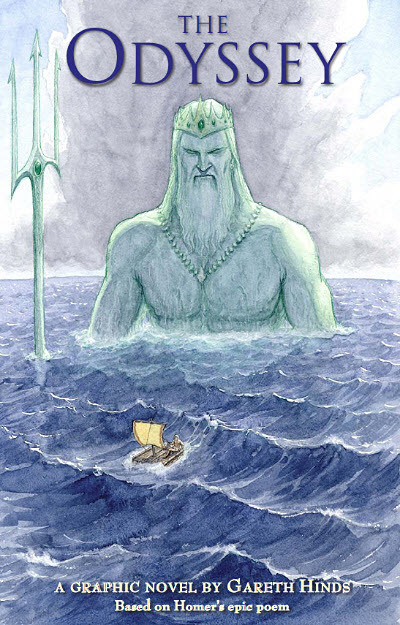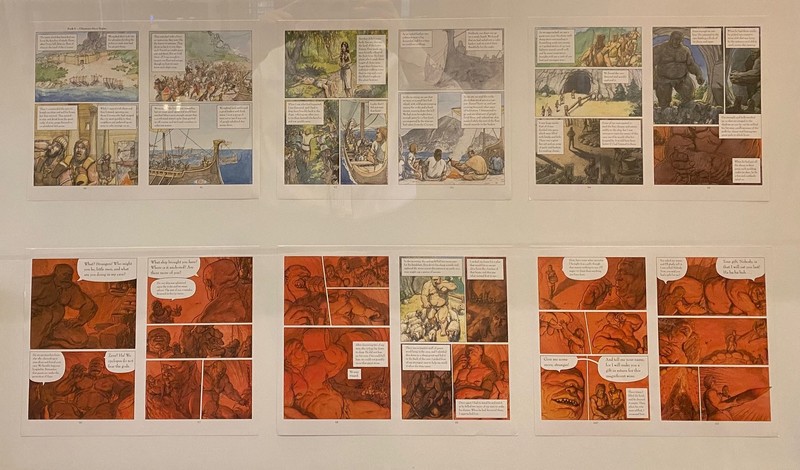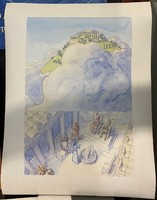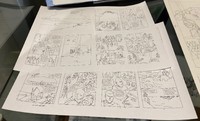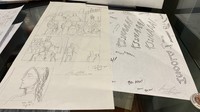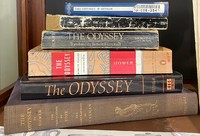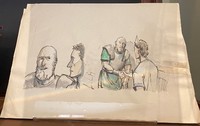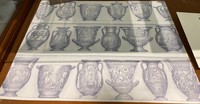The Odyssey
The Odyssey, an epic poem and beloved classic, is generally considered to have been created by the ancient Greek poet Homer between 725–675 BCE. The story begins almost twenty years after Odysseus, King of Ithaka, left to fight in the Trojan War, and almost ten years after he began his journey home. He battles mythical creatures and faces the wrath of the gods on his journey, while his wife Penelope and his son Telemachus stave off suitors who are vying for Penelope’s hand and Ithaka’s throne. The tales amplify the hero’s journey and reflect moral values, including loyalty, compassion, self-control and perseverance.
Among the challenges Hinds addressed in this masterful adaptation were:
Translations
With more than sixty, English-language translations of this classic, Hinds chose to work from the leading translations available at that time [Robert Fitzgerald (1961); Robert Fagles (1996); Richmond Lattimore (1967); and E.V.Rieu (1946)] . He re-read each chapter in those translations and re-wrote each in his own words to condense it to a length more appropriate for a graphic novel.
The Gods
Hinds puzzled over the question of how a reader can tell when a character is a god in disguise. His solution was to draw each god with a different colored outline, which persists even when they take the form of a mortal.
Emotional Beats
Several emotionally climactic scenes proved difficult and needed extra attention and additional elements not present in the original text. For example:
- Odysseus is reunited with his old dog Argos, who dies happy knowing his master has returned. It was difficult to convey the dog’s death in an emotional way without third-person narration, so Hinds added Athena to the scene.
- The abrupt ending of the epic. Hinds added a moment of introspection and a few extra lines of dialog for Athena to slow down the moment and define Odysseus’ character arc.
This adaptation was a runaway hit for Hinds. The Odyssey received multiple awards and recognitions, such as Booklist Top Ten Graphic Novels for Youth; American Library Association Great Graphic Novels for Teens; Library Media Connection ‘Best of the Best’ Graphic Novels; Kirkus Best Teen Books of 2010.
The Odyssey selected pages
The Odyssey, pages 90-101. This sequence shows the beginning of Odysseus’ travels after leaving Troy. It takes up the middle portion of the book, rather than the beginning, because The Odyssey begins in medias res with Odysseus’ son Telemachus leaving home to seek news of his father. Most of Odysseus’ travels are narrated by Odysseus himself, and he is a skilled liar and spinner of tales, so we should view these stories skeptically. Nonetheless, these are some of the most famous mythological stories and best-known parts of The Odyssey – the man-eating cyclops, the lotus eaters, and (later in his travels) Circe, the sirens, Scylla and Charybdis.
To view this or any other exhibit objects in more detail, click on its thumbnail below.
